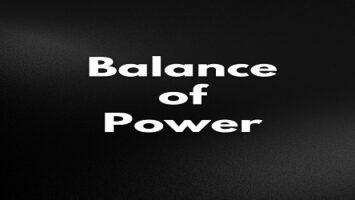Table of Contents
Types of Bureaucracy:
We can identify several different types of bureaucracy which have been in existence ever since the birth of administration. These can be conveniently grouped into three systems.
(1) Bureaucratic System.
(2) Aristocratic System.
(3) Democratic System.
Bureaucratic System:
In a general and broadly accepted sense, a bureaucratic system can be described as any personnel system in which the employees stand classified in a system of hierarchically composed system of administration i.e., administrative structure involving bureaus, divisions, sections, departments, and the like. However, in a narrow and restricted sense, the term bureaucratic system is used to identify a body of civil servants who are hierarchically organized and who stands outside the sphere of effective public control and responsibility. In ancient times, in the era of monarchy, the civil servants were servants of the king who were appointed, removed, rewarded or punished, and controlled by him. They were responsible to the king. They remained in service during the pleasure of the king and acted as instruments for effecting the autocratic rule of the king. They enjoyed special statuses and titles and were held to be superior to the people. They used to perform legislative, executive, judicial, and administrative functions on behalf of the king. We can use the designation of the Guardian Bureaucracy as used by F. M. Marx to identify the traditional system of bureaucracy- “a scholastic officialdom trained in right conduct according to the classics.” This type of Bureaucracy was considered to be the guardian of public interest but was in no way responsive and responsible to the public at large.
Aristocratic System:
In this type of Bureaucracy, the civil servants are taken as a distinct class of people, professional, expert, trained, and a career-conscious class of people. They are recruited through special examinations. In this type of bureaucracy, a well-marked distinction is made between the different grades of personnel. Promotion from a lower to a higher grade is strictly restricted. The top class of such a type is selected by the chief executive acting mostly under his own discretion and personal judgment. Their qualities have to be distinct ad appealing to the appointing authority. Such personnel is placed in high administrative posts. The administrative chiefs like the secretaries belong to this class. Below them is the general administrative class of personnel who occupy important positions in public administration, e.g. heads of divisions and districts. Below them are the technical and supervisory classes. The mobility from one level to the higher level is kept strictly limited. In other words, this type of bureaucracy has a class base.
Democratic Bureaucracy:
Democratic Bureaucracy is one which is open to all and in which no one has the intrinsic right to hold any office. The class division in the administrative hierarchy is not very rigid. The lower-level officials can get promotions to the higher levels in case their work meets the higher standards. The work equation is objective and systematic. In other words, it provides opportunities for inner promotions on merit as determined by an objective systematic, and continuous evaluation of work done by the employees. Usually, persons who fall within the age range of 18-45 years can join public service. Job specializations and experience are given full weightage in the selection of personnel. A good deal of mobility from public service to private service or from one occupation to another is possible. Public Service is not regarded as a lifelong career.
This type of bureaucratic system is found in developed Western liberal democratic systems like the USA.
While discussing the forms or types of Bureaucracy, we should also refer to the typology suggested by F. M . Marx. He suggests four types of Bureaucracy:
(1) The Guardian Bureaucracy i.e., the Bureaucracy of the traditional classical type in which the public service acts as the guardian of the public but is not responsible. It is created and maintained by the rulers.
(2) Caste Bureaucracy- Such a public service is confined to certain classes and class connections.
(3) The Patronage Bureaucracy- In this system, Bureaucracy is recruited by the elected executive with a view to reward its supporters. It is offered as a “spoil” to the liked. Traditionally, in the USA, the President used to appoint a very large number of officials of his choice and it used to be called the Spoils System. Now this system has suffered a decline but is not altogether absent. Most of the civil servants in the USA are now recruited on merit, yet the Spoils System also continues in a limited way.
(4) Merit Bureaucracy i.e., bureaucracy wherein recruitment to public service is done through open competitions and interviews, and merit is used as the sole criterion for selecting the personnel.
In contemporary times, Merit Bureaucracy is responsive and disciplined. Democratic Bureaucracy is considered to be the essential and useful feature of such a system of bureaucracy.









Comments (No)